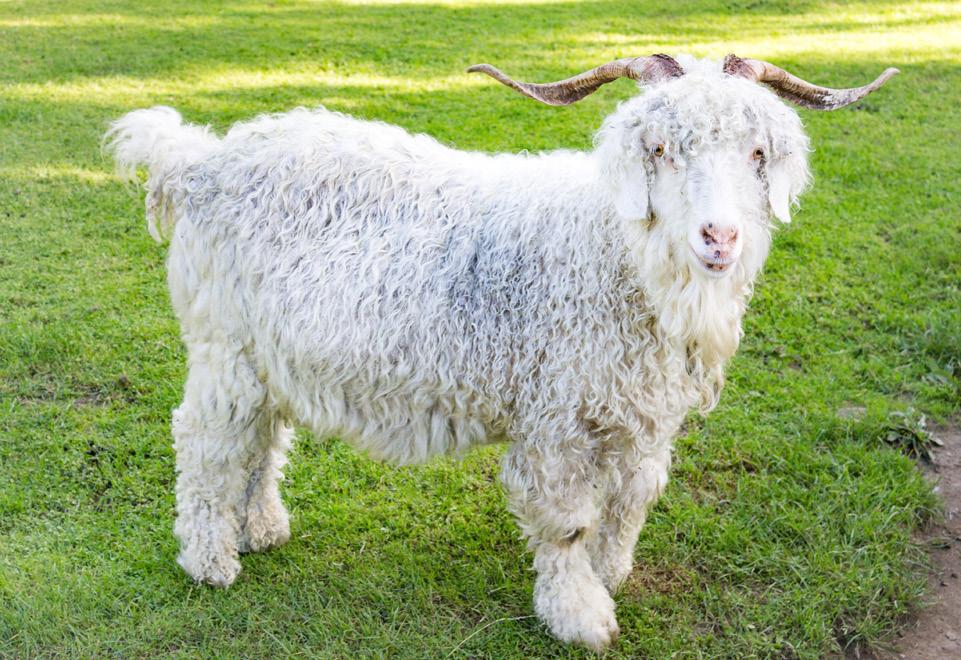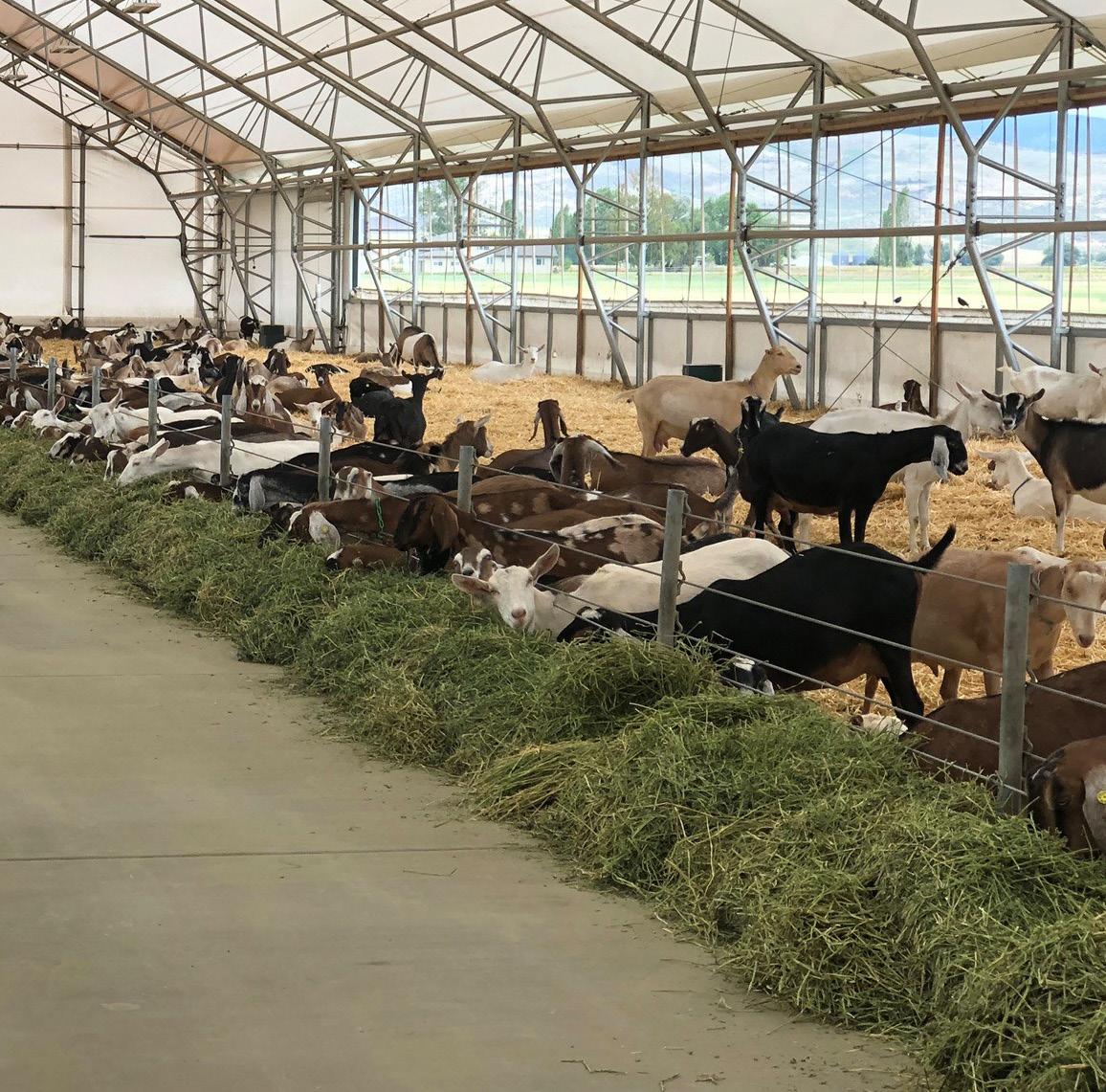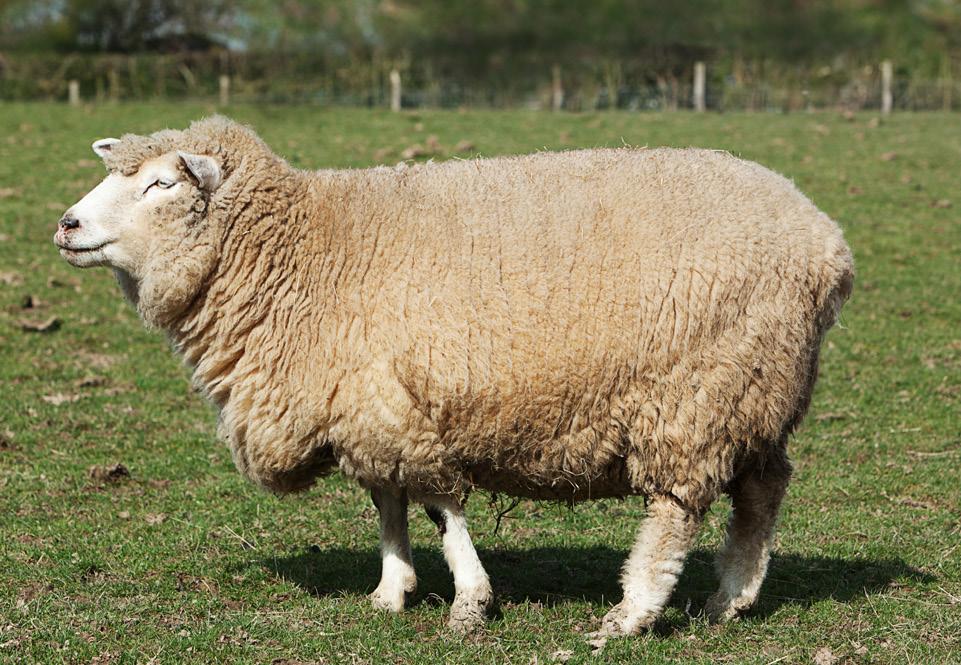
2 minute read
Small Ruminants
CHAPTER 1, SECTION 6 SMALL RUMINANTS
GOATS
Goats are divided into three categories, dairy, meat and fiber. Each category has several breeds that boast specific characteristics. Those varying characteristics come into consideration when choosing a specific breed for a specific climate.
DAIRY GOAT
In the dairy goat family, the American Dairy Goat Association is a great source of information about the dairy goat industry and offers tips for the export and import of U.S. breeding stock and genetics.
While Saanen have the richest milk and are the most popular breed for commercial goat dairies, they can be difficult to breed by artificial insemination (AI). Milk richness is based on a ratio of milk volume to fat and protein content.
Other breeds of dairy goats include Alpine, LaMancha, Nubian, Oberhasli, Sable, Toggenburg and Nigerian Dwarf. The Nigerian Dwarf, while the smallest breed and lowest in milk production, produces the highest fat and protein content of all the breeds.

MEAT GOAT
The meat goat family includes Spanish, Boer, Kiko, Savannah and Myotonic (fainting goats) breeds. Specific characteristics of the Myotonic make it a good choice as a terminal sire for meat goats. The stress-blocking gene improves the quality of the meat. The Spanish breed works well in hot weather, and Kiko is suited to colder climates. Boer works in both hot and moderately cold weather.

FIBER GOAT
A third, but smaller, category is fiber goats. The Angora has a small, but high-quality, population in the U.S. The strong elastic fiber of Angora coats creates mohair, which differs from wool primarily in its smoothness and luster.
FOR MORE INFORMATION
The American Dairy Goat Association posts registrations by breed and production averages on its website https://adga.org.
References
http://adga.org/knowledgebase/breed-averages/ https://adga.org/annual-report/ https://adga.org https://adga.org/goat-export-marketing/
Dairy goat photos provided by Grande Ronde Dairy

SHEEP
Sheep are raised in the United States for both meat and wool. The number of sheep in the United Stated has remained relatively steady the past five years. U.S. Department of Agriculture (USDA) reported 5.2 million sheep in the U.S. in 2020, with 101,000 operations in the country reported in the 2017 Census of Agriculture. More than two-thirds of U.S. sheep operations are located in the Southern Plains, Mountain and Pacific regions (USDA ERS, 2020).
Growth has occurred in the hair-sheep sector, which include Katahdin, Dorper, and Texel breeds. These sheep easily adapt to warmer, more humid conditions of the southern United States and do not require shearing, unlike other breeds. This factor allows the U.S. to provide sheep suitable for all types of climates.
Wool breeds, such as the popular Border Leicesters, have seen sharp growth as well. With the onset of the COVID-19 pandemic, at-home spinning, weaving, and crafting has accelerated, causing a greater demand for such wool.
In addition, mainstream meat breeds are improving their product, and demand for lamb is increasing sharply through farmers markets and direct marketing. The U.S. sheep industry has many breeders who offer these breeds of sheep.
Dairy sheep are available in very small numbers in the United States.

DAIRY BREEDS

HAIR SHEEP BREEDS

MEAT BREEDS

WOOL BREEDS
Reference
https://www.ers.usda.gov/topics/animal-products/sheep-lamb-mutton/sector-at-a-glance/










